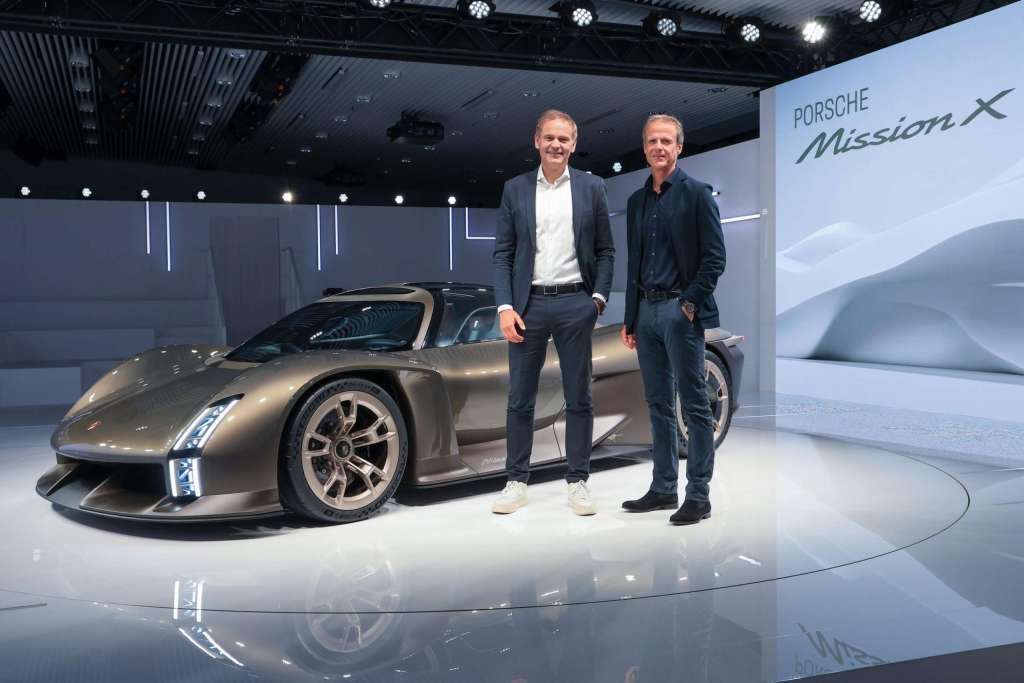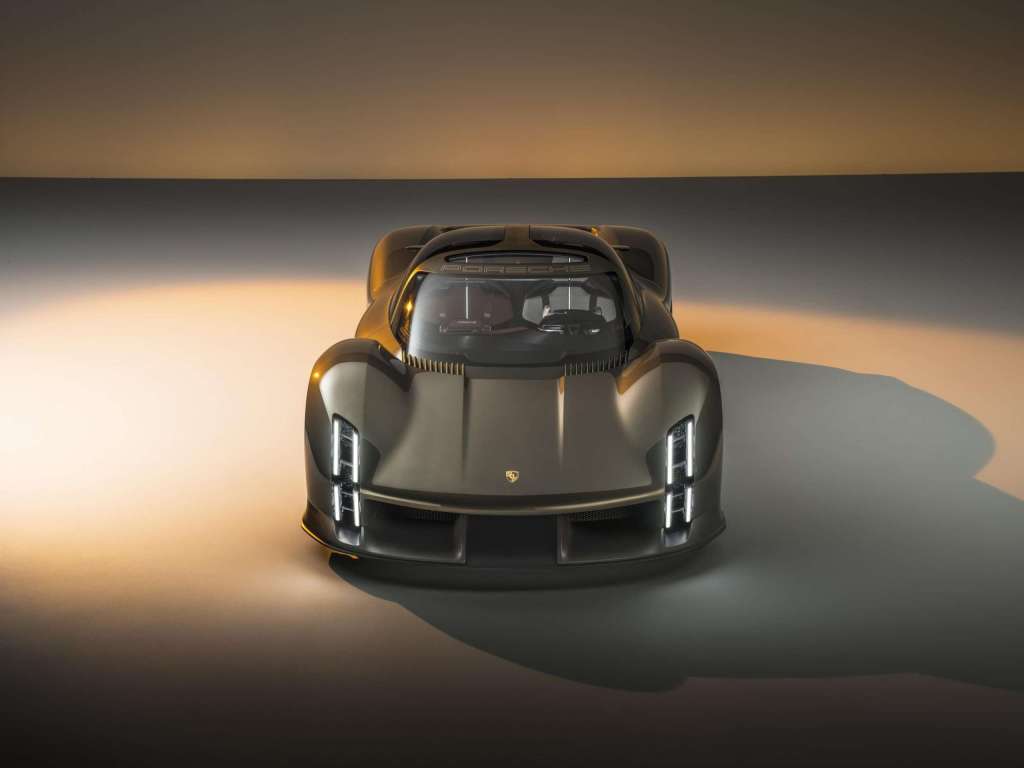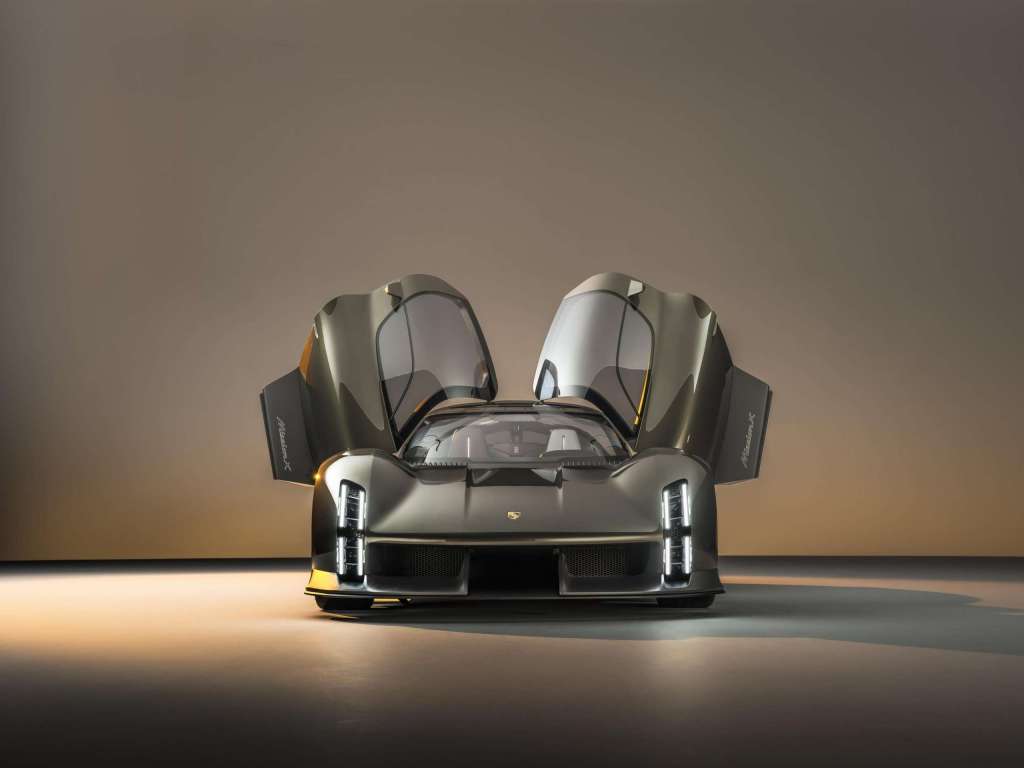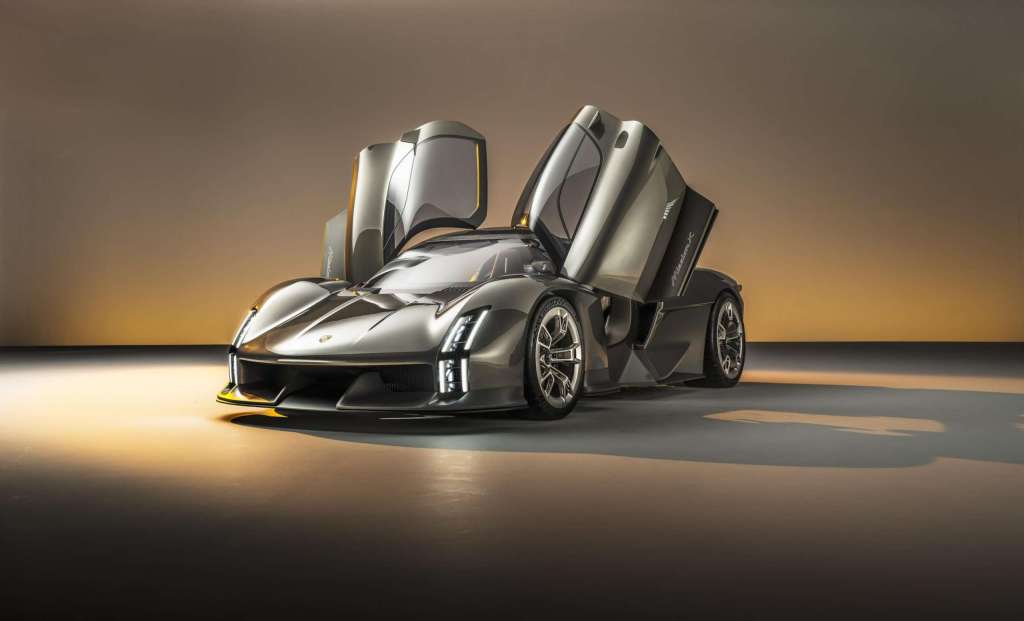
Now the cat is out of the bag. To mark Porsche’s 75th anniversary – on June 8, 1948, the 356 No. 1 Roadster received its operating license as the first Porsche production car – Porsche is presenting a beautiful study. With the Porsche Mission X concept, Porsche shows what the future of the sports car could look like in Zuffenhausen.
Just in time for the start of the anniversary weekend with the Festival of Dreams at the Hockenheimring, Porsche presented its latest concept. At the Porsche Museum in Stuttgart, CEO Oliver Blume showed the vision of an electric hypercar. The concept was christened Mission X, presumably in reference to the Taycan precursor, which was christened Mission E at the time.

“The Porsche Mission X is a technology beacon for the sports car of the future. It picks up the torch of iconic sports cars of decades past: like the 959, the Carrera GT and the 918 Spyder before it, the Mission X provides critical impetus for the evolutionary development of future vehicle concepts”
Oliver Blume, Chairman of the Porsche AG’s executive board
Blume put the Porsche Mission X directly on a par with the Porsche 959, Carrera GT and 918 Spyder. “The Porsche Mission X is a technology beacon for the sports car of the future. It picks up the torch of iconic sports cars of decades past: like the 959, the Carrera GT and the 918 Spyder before it, the Mission X provides critical impetus for the evolutionary development of future vehicle concepts.”

The CEO describes the motive behind the Porsche Mission X as follows: “Daring to dream and dream cars are two sides of the same coin for us: Porsche has only remained Porsche by constantly changing.” At the same time, it is apparently not yet clear whether the Mission X will go into series production in this or a similar form. However, Porsche’s press release states tellingly:
Porsche exemplifies e-performance yet is also a pioneer in sustainable mobility. The concept study meets both objectives in full measure. The visions: if the Mission X goes into series production, then it should
Even at first glance, it is clear where the engineers and designers got their inspiration for the Porsche Mission X, which is only 1.20 meters in height. The forward-opening doors and extremely flat silhouette are very reminiscent of current Le Mans prototypes. Yet the dimensions of Porsche’s potentially first ever electric hypercar are very compact. It is two meters wide and a good four and a half meters long. With the wheelbase being identical to the Carrera GT and 918 Spyder.



The cockpit is quite far forward. With a little imagination, this even makes it look like the legendary Porsche 956/962 Group C racer from the side. However, this is technically necessary, as the batteries are positioned directly behind the cockpit. Porsche calls this design E-Core. It is intended to center the mass. The chic center-lock wheels measure 20 inches in diameter at the front and 21 inches at the rear. With its specially developed Rocket Metallic paint, changing from green-ish to grey to brown-ish, it underscores the luxurious impression of the Mission X that is intended in addition to performance.
The Mission X’s innovative light signature gives the vehicle an unmistakable look. With their basic vertical structure, they are reminiscent of the Porsche 906/908 and completely reinterpret the four-dot matrix that is now part of the brand face. “A high-tech support structure frames the LED light modules and presents the exposed narrow elements of daytime running lights and indicators. When activated, the light opens up like an eye blinking open”, it says. The tail light with integrated Porsche lettering is seemingly floating and transparent. The four elements extend across the entire width of the vehicle.
On the interior, there is a certain lack of symmetry in the Porsche Mission X. Everything is driver-focussed. At first glance, the differently colored seats catch the eye. While the passenger seat remains in one color, the shoulder and head restraints on the driver’s seat are covered in lighter contrasting leather. The leather colors are called Andaluz brown and Kalahari gray on the driver’s seat. The passenger seat, on the other hand, is only Andaluc Brown.
Another reminiscence of Le Mans prototypes is the open-top steering wheel. The buttons and dials can be used to adjust the suspension (PASM), the differential (PTV), the traction control, and now traditionally the driving modes on the go. A so-called drag reduction system (DRS) for even higher straight-line-speeds is also installed, according to the steering wheel labeling. The combination of analog chronograph and digital laptimer is intended to present valuable information in both racing and rally operations.
Should Porsche be able to realize the goals set out in the vision, a production model derived from the Mission X would be absolutely groundbreaking. As current electric hypercars like the Lotus Evija weigh in at over 1,600 kilograms, one kilogram per horsepower in the Mission X would mean at least 1,500 hp.
We are curious to see whether Porsche will put such an electric hypercar into series production in the future. However, the fact that the decision-makers from Zuffenhausen are already mentioning it in the same breath as the previous Porsche Supercars hardly suggests any other conclusion. Let’s be surprised…
© images: Porsche AG
Elferspot magazine